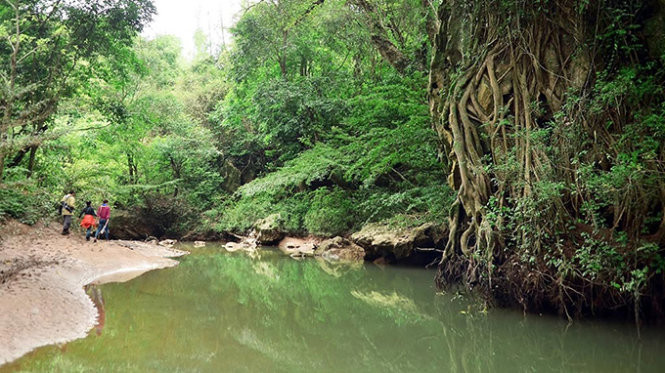Phong Nha Botanical Garden, part of the UNESCO-recognized Phong Nha-Ke Bang National Park in the central province of Quang Binh, has opened to the public without charging admission fees since Wednesday, according to the park’s management.
The garden is home to Gio (Wind) Waterfall, Vang Anh Lake, a prototype exhibition house, a propagation section, and pristine forest patches.
Its diverse flora provides a rich habitat for various species of birds and mammals.
Admission is free for now, the park management said.
According to the Quang Binh portal, the province received roughly 2.6 million visits within the first nine months, up 130 percent compared to the same period last year.
Foreign visits account for 36,300 of the total, a 27.5 percent year-on-year increase.
The province’s tourism department has recently diversified activities to draw more visitors.
Last month, it officially launched tours to Son Doong Cave – the world’s current largest – and inaugurated the “zipline” service.
Running from the Chay River to Toi (Dark) Cave, the service allows tourists to glide into the cave or plunge into the river by swinging on a modern 400-meter cable line.
Besides diversifying the site’s tourism services, the activity is also aimed at bringing tourists a new, adventurous experience.
Phong Nha-Ke Bang National Park, some 500km south of Hanoi, is situated in a 2,000 km² limestone zone in Vietnamese territory that borders another, similarly sized limestone zone named Him Namno in Laos.
The park was founded to preserve one of the world's two largest karst regions as well as the ecosystem of the limestone forest of the Annamite Range region on the north-central coast of Vietnam.
Phong Nha-Ke Bang is noted for its cave and grotto systems, as it is composed of 300 caves and grottos with a total length of about 70km, of which only 20 have been surveyed by Vietnamese and British scientists.
Prior to the discovery of Son Doong Cave, Phong Nha held several world cave records, as it boasts the longest underground river and the largest caverns and passageways.
The park was listed among UNESCO's World Heritage Sites in 2003 for its immense geological value and rich biodiversity.
Like us on Facebook or follow us on Twitter to get the latest news about Vietnam!



















































